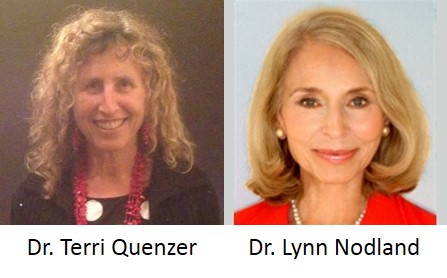You know those lazy afternoons where you’re sitting in a nice, big chair, or on a comfy couch, basking in the warm sunshine coming through the window, and the next thing you know, you’re waking up? Or better yet, when you actually plan to take a nice nap, you get comfortable in your favorite spot, maybe your bed, maybe the couch, you place the pillows in just the right spot, pull the covers up around your neck and let yourself relax and drift off into the sweetness of your nap as everything else melts away.
There are few things I love more than a nap! I tend to wake up very early in the morning and hit the ground running, then stay up late at night, often writing or working on something. I find it difficult to get the recommended eight hours of sleep every night, often getting only around six hours of sleep. So when I get the opportunity, I love to take a nap, typically about 30 minutes. I always wake up feeling refreshed, alert, and ready to be productive. In fact, often when I feel tired and stuck, if I take a nap, I wake up with fresh ideas that get things flowing.
I learned that I’m in good company. According to the National Sleep Foundation, Albert Einstein, Winston Churchill, John F. Kennedy, Ronald Reagan, Napoleon, and Thomas Edison are all known to have valued an afternoon nap.
A siesta, or short nap typically taken in the early afternoon or right after lunch, is traditional in countries such as Spain, Italy, Greece, and the Philippines. In those countries it’s not unusual for shops, museums, and churches to close for a few hours in the afternoon for siesta.
Napping has several benefits. Napping energizes, restores alertness, improves memory, enhances performance, and reduces accidents and mistakes. Furthermore, napping feels good and enhances mood.
The 20-minute power nap is good for alertness and motor skills. According to Jennifer Soong (WebMD), longer naps help boost memory and enhance creativity. Napping for 30-60 minutes (slow-wave sleep) is good for decision-making skills, while napping for 60-90 minutes (REM sleep) is key in making new connections in the brain and solving creative problems.
The difference between naps and coffee: naps enhance memory, whereas caffeine can decrease memory and lead to more mistakes. When I was in college I performed experiments on myself to determine the effects of coffee and napping on my studies and productivity when I felt tired and had to study or do homework. I compared my productivity over two-hour blocks in which I either: 1) drank coffee and studied or did homework for two hours; or 2) took a one-hour nap and then studied or did homework for only one hour.
Hands down, I always accomplished more in one hour after a nap than I did in two hours staying awake and drinking coffee! I read and retained more of what I was studying and I got further along in my homework assignments with fewer mistakes. Drinking coffee never made me feel more awake or alert, it only made me feel wired.
Naps aren’t for everyone. Some people can’t get to sleep during the day. Others have no problem sleeping, but wake up feeling groggy and have difficulty coming out of the fog. Still others prefer not to take naps because it affects their sleep at night.
If you do take naps, the optimal time to nap is between 1 pm and 3 pm, when you might feel sleepy after lunch, or experience less alertness. What I like to call “the 2:30 burn-out”. It’s best not to take a nap too late in the day because it could interfere with your sleep at night.
Sweet dreams!
Resources
There are few things I love more than a nap! I tend to wake up very early in the morning and hit the ground running, then stay up late at night, often writing or working on something. I find it difficult to get the recommended eight hours of sleep every night, often getting only around six hours of sleep. So when I get the opportunity, I love to take a nap, typically about 30 minutes. I always wake up feeling refreshed, alert, and ready to be productive. In fact, often when I feel tired and stuck, if I take a nap, I wake up with fresh ideas that get things flowing.
I learned that I’m in good company. According to the National Sleep Foundation, Albert Einstein, Winston Churchill, John F. Kennedy, Ronald Reagan, Napoleon, and Thomas Edison are all known to have valued an afternoon nap.
A siesta, or short nap typically taken in the early afternoon or right after lunch, is traditional in countries such as Spain, Italy, Greece, and the Philippines. In those countries it’s not unusual for shops, museums, and churches to close for a few hours in the afternoon for siesta.
Napping has several benefits. Napping energizes, restores alertness, improves memory, enhances performance, and reduces accidents and mistakes. Furthermore, napping feels good and enhances mood.
The 20-minute power nap is good for alertness and motor skills. According to Jennifer Soong (WebMD), longer naps help boost memory and enhance creativity. Napping for 30-60 minutes (slow-wave sleep) is good for decision-making skills, while napping for 60-90 minutes (REM sleep) is key in making new connections in the brain and solving creative problems.
The difference between naps and coffee: naps enhance memory, whereas caffeine can decrease memory and lead to more mistakes. When I was in college I performed experiments on myself to determine the effects of coffee and napping on my studies and productivity when I felt tired and had to study or do homework. I compared my productivity over two-hour blocks in which I either: 1) drank coffee and studied or did homework for two hours; or 2) took a one-hour nap and then studied or did homework for only one hour.
Hands down, I always accomplished more in one hour after a nap than I did in two hours staying awake and drinking coffee! I read and retained more of what I was studying and I got further along in my homework assignments with fewer mistakes. Drinking coffee never made me feel more awake or alert, it only made me feel wired.
Naps aren’t for everyone. Some people can’t get to sleep during the day. Others have no problem sleeping, but wake up feeling groggy and have difficulty coming out of the fog. Still others prefer not to take naps because it affects their sleep at night.
If you do take naps, the optimal time to nap is between 1 pm and 3 pm, when you might feel sleepy after lunch, or experience less alertness. What I like to call “the 2:30 burn-out”. It’s best not to take a nap too late in the day because it could interfere with your sleep at night.
Sweet dreams!
Resources



 RSS Feed
RSS Feed